Abstract
OBJECTIVES--To assess the characteristics of consecutive patients referred from general practice with the presenting disorder of chest pain or palpitations, and to determine the outcome at six months and three years. SETTING--A single consultant teaching hospital cardiac clinic receiving new referrals from a health district. DESIGN--94 consecutive referrals by general practitioners to a cardiac clinic with the presenting disorder of chest pain or palpitations were assessed at first attendance (research interview, cardiologists' ratings, systematic medical case note information), home interview six months later, and by a postal questionnaire at three years. OUTCOME MEASURES--Physical and psychological symptoms, limitation of activities, satisfaction with care, and use of health care resources. RESULTS--39 patients were given a cardiac diagnosis and 51 patients were not given a cardiac or other major physical diagnosis. The non-cardiac group was more likely to be young women, and to report other physical symptoms and previous psychiatric problems. The cardiac and non-cardiac groups reported progressive improvement in presenting symptoms and disability at the six months and three year follow up, but little change in mental state. Even so, three quarters of the non-cardiac subjects described continuing limitation of activities, concern about the cause of their symptoms, and dissatisfaction with medical care. CONCLUSIONS--A substantial proportion of the consecutive referrals continued to describe symptoms and disability throughout the three years after clinic attendance. Outcome was poor for those who had negative investigations and were reassured that they had no cardiac disorder or other serious physical finding. These results have implications for defining the role of psychological assessment and for the formulation of cost effective clinical measures to (a) minimise disability associated with cardiac disorder; and (b) prevent and treat handicaps in those without major physical diagnoses.
Full text
PDF
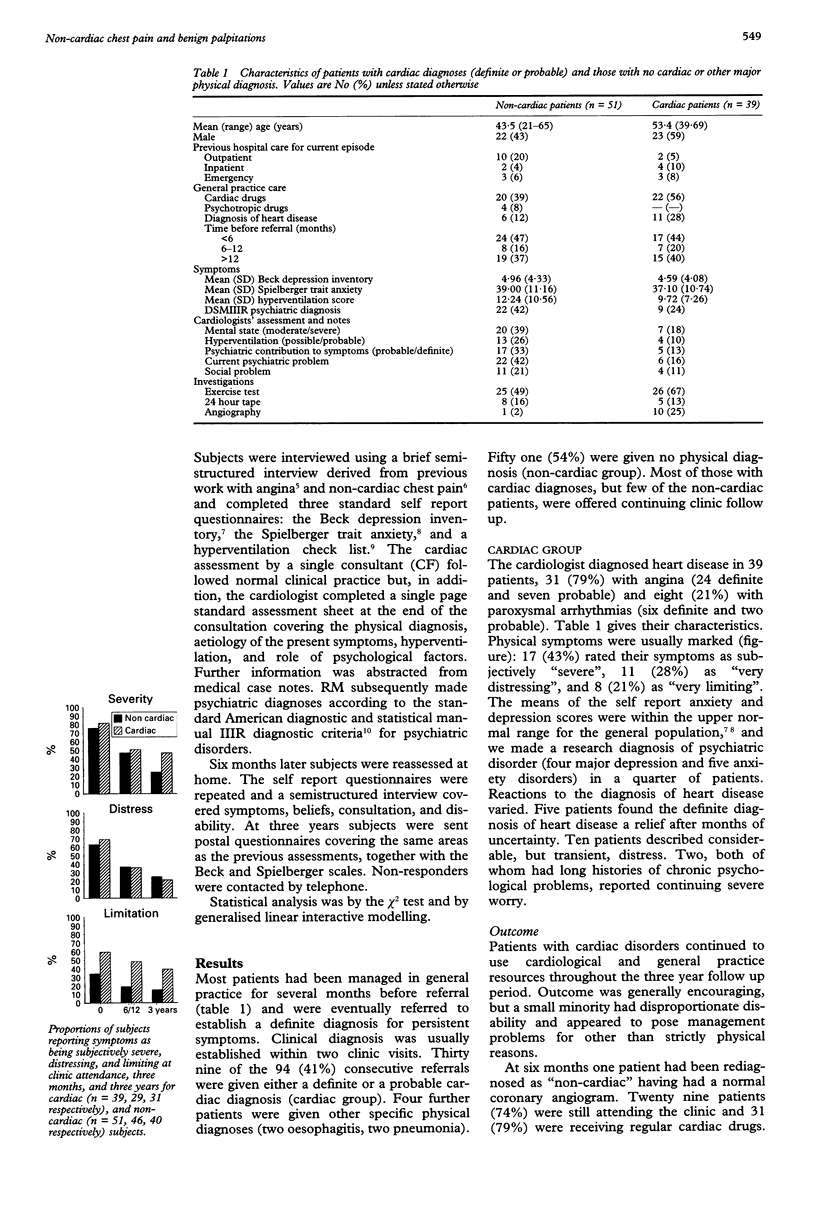
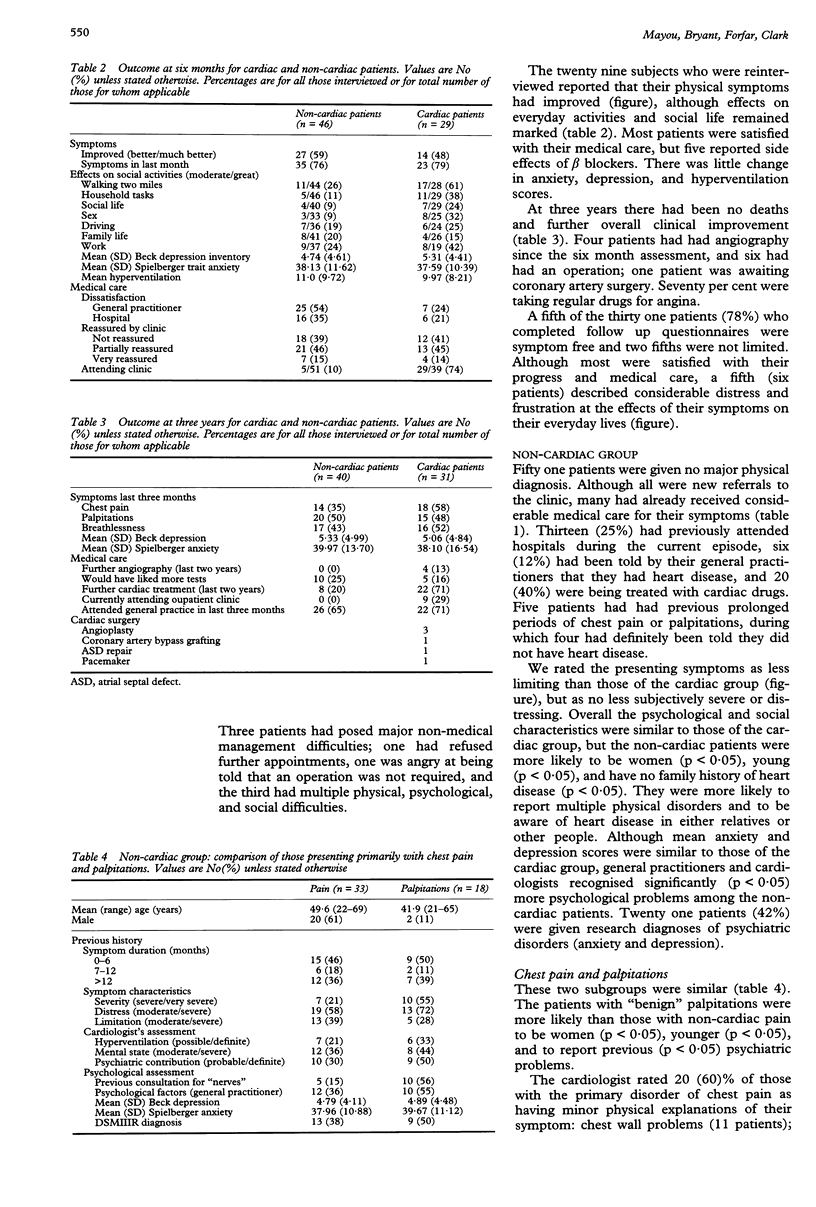
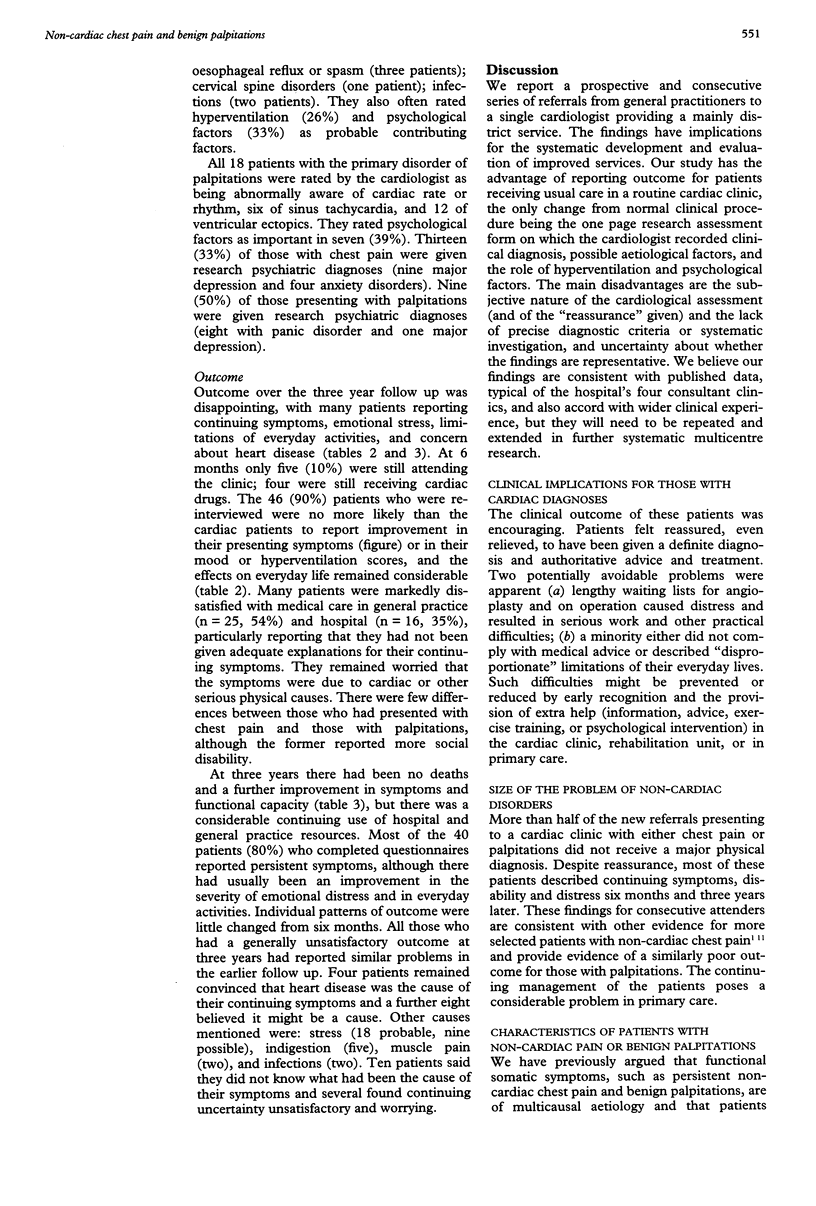
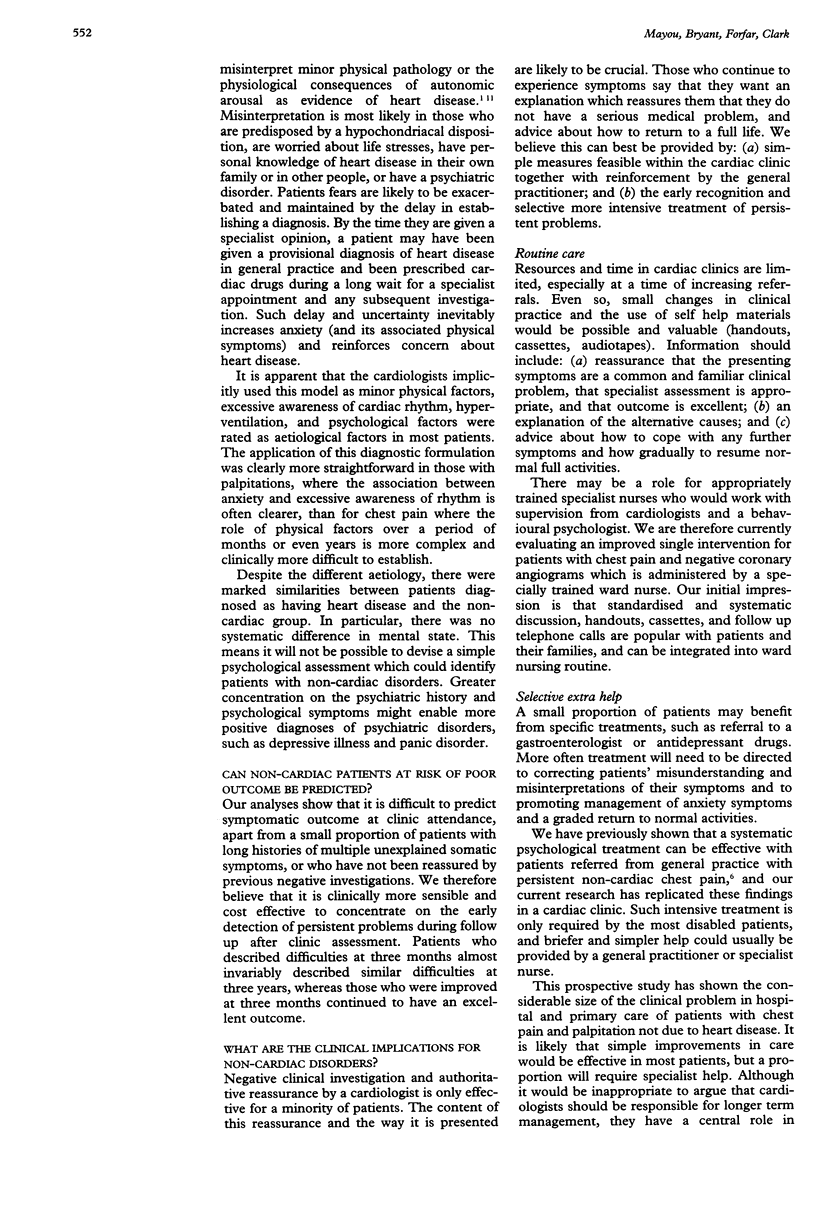
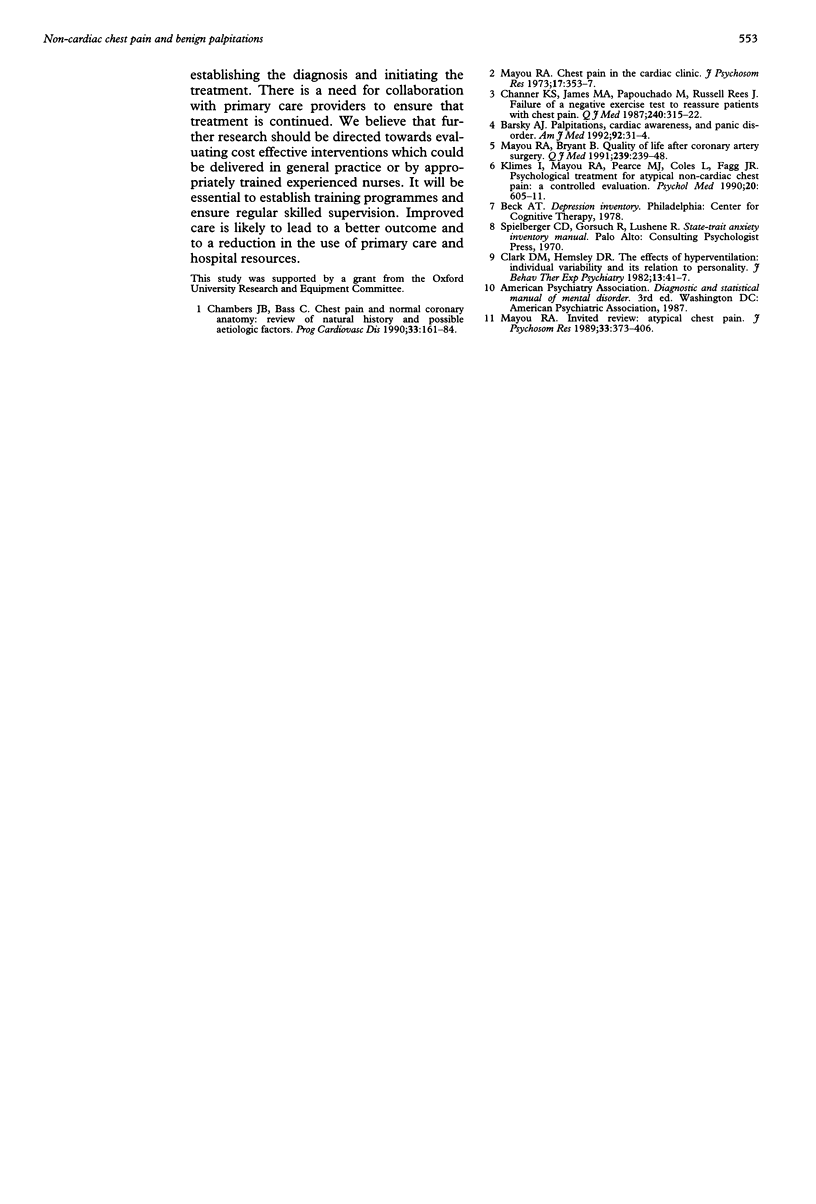
Selected References
These references are in PubMed. This may not be the complete list of references from this article.
- Chambers J., Bass C. Chest pain with normal coronary anatomy: a review of natural history and possible etiologic factors. Prog Cardiovasc Dis. 1990 Nov-Dec;33(3):161–184. doi: 10.1016/0033-0620(90)90007-o. [DOI] [PubMed] [Google Scholar]
- Channer K. S., James M. A., Papouchado M., Rees J. R. Failure of a negative exercise test to reassure patients with chest pain. Q J Med. 1987 Apr;63(240):315–322. [PubMed] [Google Scholar]
- Clark D. M., Hemsley D. R. The effects of hyperventilation; individual variability and its relation to personality. J Behav Ther Exp Psychiatry. 1982 Mar;13(1):41–47. doi: 10.1016/0005-7916(82)90034-9. [DOI] [PubMed] [Google Scholar]
- Klimes I., Mayou R. A., Pearce M. J., Coles L., Fagg J. R. Psychological treatment for atypical non-cardiac chest pain: a controlled evaluation. Psychol Med. 1990 Aug;20(3):605–611. doi: 10.1017/s0033291700017116. [DOI] [PubMed] [Google Scholar]
- Mayou R. Chest pain in the cardiac clinic. J Psychosom Res. 1973 Dec;17(5):353–357. doi: 10.1016/0022-3999(73)90044-5. [DOI] [PubMed] [Google Scholar]
- Mayou R. Invited review: atypical chest pain. J Psychosom Res. 1989;33(4):393–406. doi: 10.1016/0022-3999(89)90001-9. [DOI] [PubMed] [Google Scholar]


